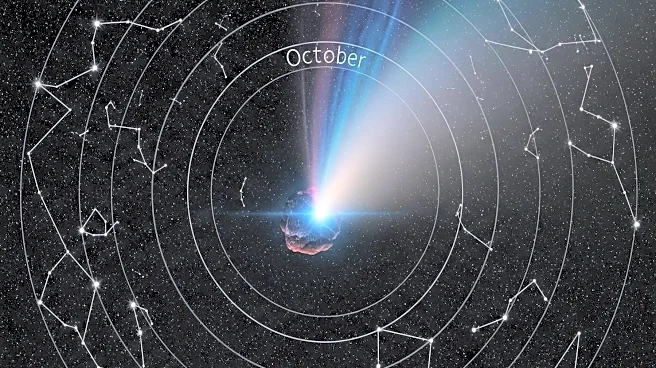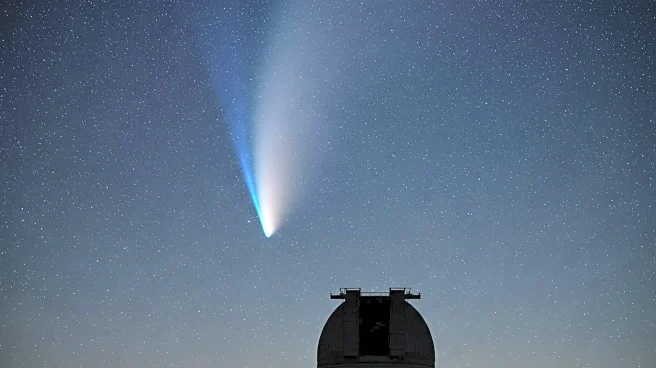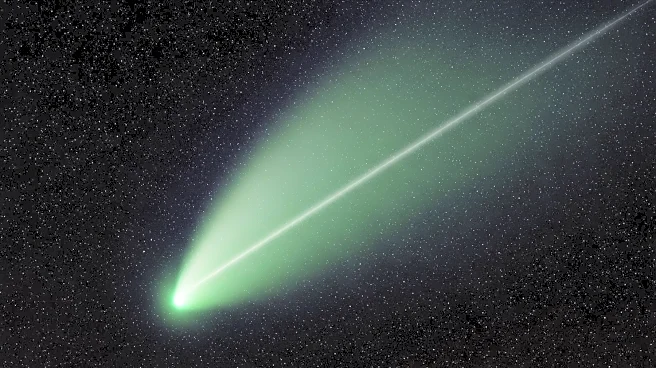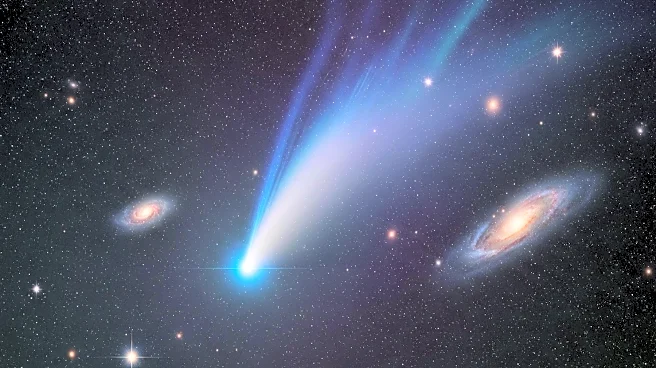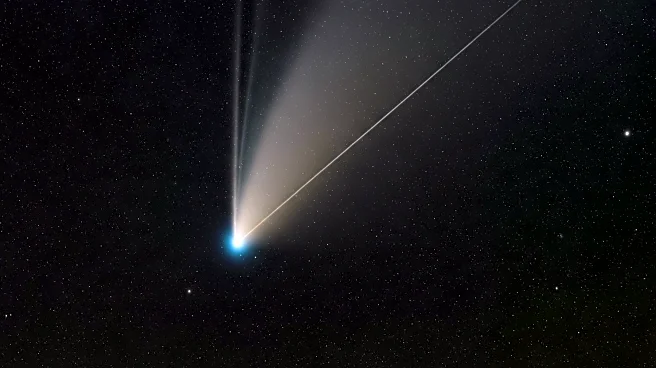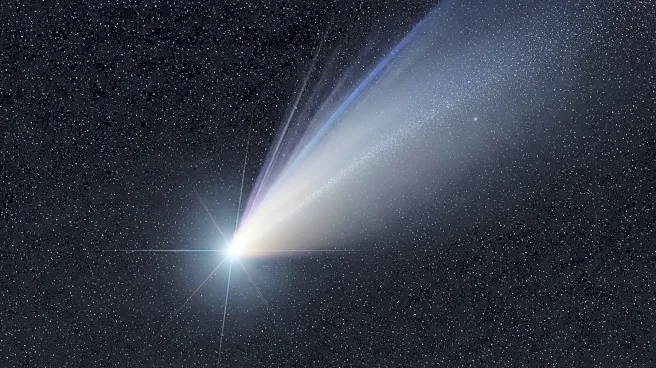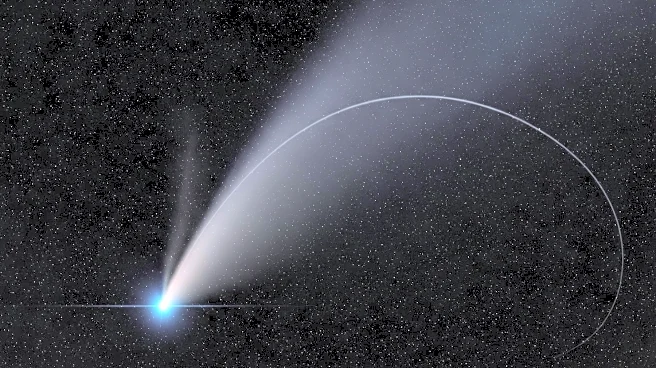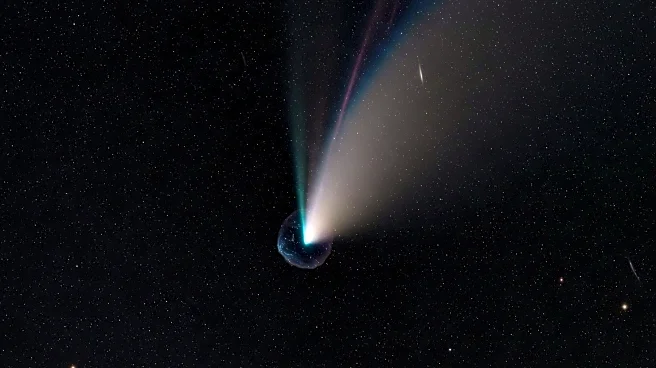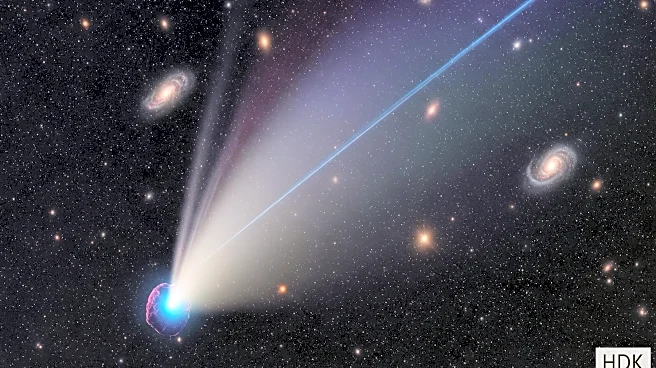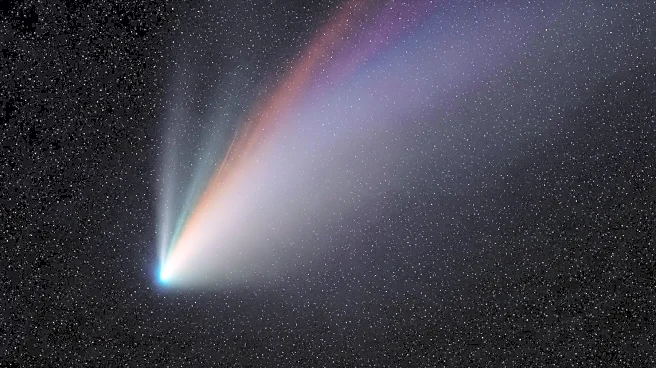What's Happening?
A newly discovered comet, designated C/2025 R2 (SWAN), is set to make a close approach to Earth, coming within 25.10 million miles around October 21. This celestial event, reported by Space.com, will be visible to observers in the Southern Hemisphere using telescopes and binoculars, and may become visible to the naked eye as it moves into the Northern Hemisphere. The comet was first identified by Ukrainian amateur astronomer Vladimir Bezugly using images from the Solar Wind Anisotropies (SWAN) camera aboard the Solar and Heliospheric Observatory (SOHO). The comet's orbit around the Sun is calculated to be 1,400 years, making this a once-in-a-lifetime opportunity to witness its passage.
Why It's Important?
The appearance of comet C/2025 R2 (SWAN) presents a unique opportunity for astronomers and the public alike to observe a rare celestial event. Comets are of significant interest to scientists because they can provide insights into the early Solar System and the origins of water and organic compounds on Earth. The comet's visibility in both hemispheres increases public engagement with astronomy and encourages interest in space science. For researchers, capturing data and images of the comet as it passes could yield valuable information about its composition and trajectory.
What's Next?
As the comet approaches, astronomers will likely intensify their efforts to study it, using various telescopes and instruments to gather data. Public interest is expected to grow, with educational institutions and observatories potentially organizing viewing events. The comet's trajectory through constellations such as Sagittarius, Scorpius, and Libra will provide additional opportunities for observation and study. The scientific community will be keen to analyze the data collected to enhance understanding of cometary behavior and its implications for planetary science.

